The red flour beetle, Tribolium castaneum, is a worldwide insect pest of stored products, particularly food grains, and a powerful model organism for developmental, physiological and applied entomological research on coleopteran species. Among coleopterans, T. castaneum has the most fully sequenced and annotated genome and consequently provides the most advanced genetic model of a coleopteran pest. The beetle is also easy to culture and has a short generation time. Research on this beetle is further assisted by the availability of expressed sequence tags and transcriptomic data. Most importantly, it exhibits a very robust response to systemic RNA interference (RNAi), and a database of RNAi phenotypes (iBeetle) is available. Finally, classical transposon-based techniques together with CRISPR/Cas-mediated gene knockout and genome editing allow the creation of transgenic lines. As T.
 TA 02 |
|
B4924-10 |
ApexBio |
10 mg |
EUR 160 |
|
|
|
Description: p38 MAPK inhibitor |
 TA 02 |
|
B4924-5.1 |
ApexBio |
10 mM (in 1mL DMSO) |
EUR 81 |
|
|
|
Description: p38 MAPK inhibitor |
 TA 02 |
|
B4924-50 |
ApexBio |
50 mg |
EUR 600 |
|
|
|
Description: p38 MAPK inhibitor |
 PU 02 |
|
B5687-10 |
ApexBio |
10 mg |
EUR 197 |
|
|
|
Description: negative allosteric modulator of 5-HT3 receptors |
 PU 02 |
|
B5687-25 |
ApexBio |
25 mg |
EUR 571.2 |
 PU 02 |
|
B5687-5 |
ApexBio |
5 mg |
EUR 172.8 |
 PU 02 |
|
B5687-50 |
ApexBio |
50 mg |
EUR 832 |
|
|
|
Description: negative allosteric modulator of 5-HT3 receptors |
 UCN-02 |
|
C4829-1 |
ApexBio |
1 mg |
EUR 326 |
|
|
|
Description: protein kinase C inhibitor |
 UCN-02 |
|
C4829-5 |
ApexBio |
5 mg |
EUR 1146 |
|
|
|
Description: protein kinase C inhibitor |
 UCN-02 |
|
U006-1MG |
TOKU-E |
1 mg |
EUR 216.32 |
|
|
|
Description: C28H26N4O4 |
 UCN-02 |
|
U006-5MG |
TOKU-E |
5 mg |
EUR 756.48 |
|
|
|
Description: C28H26N4O4 |
 OXF BD 02 |
|
B4918-10 |
ApexBio |
10 mg |
EUR 237 |
|
|
|
Description: Selective inhibitor of the first bromodomain of BRD4 |
 OXF BD 02 |
|
B4918-50 |
ApexBio |
50 mg |
EUR 1000 |
|
|
|
Description: Selective inhibitor of the first bromodomain of BRD4 |
 ELX-02 disulfate |
|
T19306-10mg |
TargetMol Chemicals |
10mg |
Ask for price |
|
|
|
Description: ELX-02 disulfate |
 ELX-02 disulfate |
|
T19306-1mg |
TargetMol Chemicals |
1mg |
Ask for price |
|
|
|
Description: ELX-02 disulfate |
 ELX-02 disulfate |
|
T19306-50mg |
TargetMol Chemicals |
50mg |
Ask for price |
|
|
|
Description: ELX-02 disulfate |
 ELX-02 disulfate |
|
T19306-5mg |
TargetMol Chemicals |
5mg |
Ask for price |
|
|
|
Description: ELX-02 disulfate |
 145867-02-3 |
|
TBZ1279 |
ChemNorm |
unit |
Ask for price |
 1961358-02-0 |
|
TBW00994 |
ChemNorm |
10mg |
Ask for price |
, Clone: LST1/02) Monoclonal LST1 Antibody (clone LST1/02), Clone: LST1/02 |
|
APR12482G |
Leading Biology |
0.05mg |
EUR 580.8 |
|
Description: A Monoclonal antibody against Human LST1 (clone LST1/02). The antibodies are raised in Mouse and are from clone LST1/02. This antibody is applicable in WB and IHC-P, ICC, IP |
 Tetramer Protein) Recombinant Human P53 WT (HLA-A*02:01) Tetramer Protein |
|
RP02698 |
Abclonal |
100μg |
EUR 2843.75 |
|
|
 Complex Protein) Recombinant Human P53 R175H (HLA-A*02:01) Complex Protein |
|
RP02688 |
Abclonal |
500μg |
EUR 305.5 |
|
|
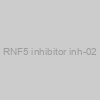 RNF5 inhibitor inh-02 |
|
T35883-10mg |
TargetMol Chemicals |
10mg |
Ask for price |
|
|
|
Description: RNF5 inhibitor inh-02 |
 RNF5 inhibitor inh-02 |
|
T35883-1g |
TargetMol Chemicals |
1g |
Ask for price |
|
|
|
Description: RNF5 inhibitor inh-02 |
 RNF5 inhibitor inh-02 |
|
T35883-1mg |
TargetMol Chemicals |
1mg |
Ask for price |
|
|
|
Description: RNF5 inhibitor inh-02 |
 RNF5 inhibitor inh-02 |
|
T35883-50mg |
TargetMol Chemicals |
50mg |
Ask for price |
|
|
|
Description: RNF5 inhibitor inh-02 |
 RNF5 inhibitor inh-02 |
|
T35883-5mg |
TargetMol Chemicals |
5mg |
Ask for price |
|
|
|
Description: RNF5 inhibitor inh-02 |
 WSID 02 AO LOTO |
|
833773 |
BRADY NV |
Piece of 1 Piece(s) |
EUR 14.81 |
|
Description: Description Dutch: Nood-ID-tag voor werknemers; Description French: Etiquette d’identification d’urgence pour les employés |
 Complex Protein) Biotinylated Recombinant Human P53 WT (HLA-A*02:01) Complex Protein |
|
RP02756 |
Abclonal |
500μg |
EUR 487.5 |
|
|
 Tetramer Protein) PE-Labeled Human HLA-A*02:01&B2M&p53 (HMTEVVRHC) Tetramer Protein |
|
HLP-HP2H6 |
ACROBIOSYSTEMS |
25ug |
EUR 2461 |
|
|
|
Description: PE-Labeled Human HLA-A*02:01&B2M&p53 (HMTEVVRHC) Tetramer Protein (HLP-HP2H6) is expressed from human 293 cells (HEK293). It contains AA Gly 25 - Ile 308 (HLA-A*02:01) & Ile 21 - Met 119 (B2M) & HMTEVVRHC peptide (Accession # AAA59606.1 (HLA-A*02:01) & P61769-1 (B2M) & HMTEVVRHC). |
 Tetramer Protein (MALS verified)) Human HLA-A*02:01&B2M&p53 (HMTEVVRRC) Tetramer Protein (MALS verified) |
|
HLP-H52H5 |
ACROBIOSYSTEMS |
200ug |
EUR 299.6 |
|
|
|
Description: Human HLA-A*02:01&B2M&p53 (HMTEVVRRC) Tetramer Protein (HLP-H52H5) is expressed from human 293 cells (HEK293). It contains AA Gly 25 - Ile 308 (HLA-A*02:01) & Ile 21 - Met 119 (B2M) & HMTEVVRRC peptide (Accession # AAA59606.1 (HLA-A*02:01) & P61769-1 (B2M) & HMTEVVRRC). |
 Tetramer Protein) PE-Labeled Human HLA-A*24:02&B2M&p53 (TYSPALNKMF) Tetramer Protein |
|
HLP-HP2Hc |
ACROBIOSYSTEMS |
200ug |
EUR 428 |
|
|
|
Description: PE-Labeled Human HLA-A*24:02&B2M&p53 (TYSPALNKMF) Tetramer Protein (HLP-HP2Hc) is expressed from human 293 cells (HEK293). It contains AA Gly 25 - Ile 305 (HLA-A*24:02) & Ile 21 - Met 119 (B2M) & TYSPALNKMF peptide (Accession # AAA59600.1 (HLA-A*24:02) & P61769 (B2M) & TYSPALNKMF). |
, Clone: MEM-E/02) Monoclonal HLA-E Antibody (clone MEM-E/02), Clone: MEM-E/02 |
|
AMM01781G |
Leading Biology |
0.05mg |
EUR 580.8 |
|
Description: A Monoclonal antibody against Human HLA-E (clone MEM-E/02). The antibodies are raised in Mouse and are from clone MEM-E/02. This antibody is applicable in WB and IHC-P |
, Clone: MEM-E/02) Monoclonal HLA-E Antibody (clone MEM-E/02), Clone: MEM-E/02 |
|
AMM02314G |
Leading Biology |
0.05mg |
EUR 580.8 |
|
Description: A Monoclonal antibody against Human HLA-E (clone MEM-E/02). The antibodies are raised in Mouse and are from clone MEM-E/02. This antibody is applicable in WB and IHC-P |
 Antibody) Septin 2 (Sep-02) Antibody |
|
20-abx306884 |
Abbexa |
-
Ask for price
-
Ask for price
-
Ask for price
-
Ask for price
-
Ask for price
|
- 100 ug
- 1 mg
- 200 ug
- 20 ug
- 50 ug
|
|
|
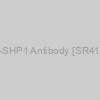 Anti-SHP1 Antibody [SR41-02] |
|
ET1602-19 |
HUABIO |
100ul |
EUR 231 |
|
|
|
Description: Tyrosine-protein phosphatase non-receptor type 6, also known as Src homology region 2 domain-containing phosphatase-1 (SHP-1), is an enzyme that in humans is encoded by the PTPN6 gene. The protein encoded by this gene is a member of the protein tyrosine phosphatase (PTP) family. PTPs are known to be signaling molecules that regulate a variety of cellular processes including cell growth, differentiation, mitotic cycle, and oncogenic transformation. N-terminal part of this PTP contains two tandem Src homolog (SH2) domains, which act as protein phospho-tyrosine binding domains, and mediate the interaction of this PTP with its substrates. This PTP is expressed primarily in hematopoietic cells, and functions as an important regulator of multiple signaling pathways in hematopoietic cells. This PTP has been shown to interact with, and dephosphorylate a wide spectrum of phospho-proteins involved in hematopoietic cell signaling, (e.g., the LYN-CD22-SHP-1 pathway). Multiple alternatively spliced variants of this gene, which encode distinct isoforms, have been reported. |
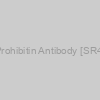 Anti-Prohibitin Antibody [SR46-02] |
|
ET1602-31 |
HUABIO |
100ul |
EUR 231 |
|
|
|
Description: Prohibitin is an evolutionarily conserved protein that has antiproliferative activity. The gene encoding human prohibitin maps to chromosome 17q21 and is ubiquitously expressed. Prohibitin is a post-synthetically modified protein that is localized in the inner membrane of mitochondria, where it regulates the cell cycle by blocking the transition between the G1 and S phases, and on the plasma membrane of B cells, where it mediates B cell maturation. Prohibitin mRNA and protein levels are high in G1, decline during the S phase, rise again in G2 and decline in M phase, which suggests that prohibitin controls the cell cycle by using both transcriptional and posttranslational mechanisms. Prohibitin is also a potential tumor suppressor protein that binds to retinoblastoma (Rb) and subsequently inhibits the activity of E2F family members in response to specific signaling cascades. Prohibitin 2 is a repressor of estrogen receptor activity, and is required for somatic and germline differentiation in the larval gonad during embryonic development. Mutations in the Prohibitin genes are correlated with breast cancer development and/or progressionin more than 80% of the cell lines analyzed. |
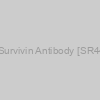 Anti-Survivin Antibody [SR44-02] |
|
ET1602-43 |
HUABIO |
100ul |
EUR 231 |
|
|
|
Description: Multitasking protein that has dual roles in promoting cell proliferation and preventing apoptosis .Component of a chromosome passage protein complex (CPC) which is essential for chromosome alignment and segregation during mitosis and cytokinesis .Acts as an important regulator of the localization of this complex; directs CPC movement to different locations from the inner centromere during prometaphase to midbody during cytokinesis and participates in the organization of the center spindle by associating with polymerized microtubules.Involved in the recruitment of CPC to centromeres during early mitosis via association with histone H3 phosphorylated at 'Thr-3' (H3pT3) during mitosis.The complex with RAN plays a role in mitotic spindle formation by serving as a physical scaffold to help deliver the RAN effector molecule TPX2 to microtubules .May counteract a default induction of apoptosis in G2/M phase .The acetylated form represses STAT3 transactivation of target gene promoters.May play a role in neoplasia. Inhibitor of CASP3 and CASP7.Essential for the maintenance of mitochondrial integrity and function. |
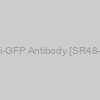 Anti-GFP Antibody [SR48-02] |
|
ET1602-7 |
HUABIO |
100ul |
EUR 231 |
|
|
|
Description: Green fluorescence protein (GFP) is derived from the jellyfish Aequorea victoria, which emits green light (emission peak at a wavelength of 509 nm) when excited by blue light (excitation peak at a wavelength of 395 nm). GFP fluorescence is stable under fixation conditions and suitable for a variety of applications. It has been widely used as a reporter for gene expression, enabling researchers to visualize and localize GFP-tagged proteins within living cells without chemical staining. |
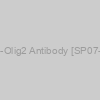 Anti-Olig2 Antibody [SP07-02] |
|
ET1604-29 |
HUABIO |
100ul |
EUR 231 |
|
|
|
Description: The oligodendrocyte lineage-specific basic helix-loop-helix (OLIG) family of transcription factors include OLIG1-OLIG3, which differ in tissue expression. OLIG1 and OLIG2 are specifically expressed in nervous tissue as gene regulators of oligodendrogenesis. OLIG2 is more widely expressed in embryonic brain than OLIG1, while OLIG3 is primarily expressed in non-neural tissues. OLIG1 and OLIG2 interact with the Nkx-2.2 homeodomain protein, which is responsible for directing ventral neuronal patterning in response to graded Sonic hedgehog signaling in the embryonic neural tube. These interactions between OLIG proteins and Nkx-2.2 appear to promote the formation of alternate cell types by inhibiting V3 interneuron development. OLIG1 and OLIG2 are abundantly expressed in oligodendroglioma and nearly absent in astrocytomas. Therefore, OLIG proteins are candidates for molecular markers of human glial brain tumors, which are the most common primary malignancies of the human brain. |
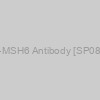 Anti-MSH6 Antibody [SP08-02] |
|
ET1604-39 |
HUABIO |
100ul |
EUR 231 |
|
|
|
Description: Multiple pathways promote short-sequence recombination (SSR) in Saccharomyces cerevisiae. When gene conversion is initiated by a double-strand break (DSB), any nonhomologous DNA that may be present at the ends must be removed before new DNA synthesis can be initiated. Removal of a 3' nonhomologous tail in S. cerevisiae depends on the nucleotide excision repair endonuclease Rad1/Rad10 and also on the mismatch repair proteins Msh2 and Msh3. Msh2 and Msh3, which function in mitotic recombination, recognize not only heteroduplex loops and mismatched basepairs, but also branched DNA structures with a free 3' tail. Msh2 and Msh6 form a protein complex required to repair mismatches generated during DNA replication. Yeast Msh2-Msh6 interact asymmetrically with the DNA through base-specific stacking and hydrogen bonding interactions and backbone contacts. The importance of these contacts decreases with increasing distance from the mismatch, implying that interactions at or near the mismatch are important for binding in a kinked DNA conformation. |
 Anti-ALDH1A1 Antibody [SY11-02] |
|
ET1605-24 |
HUABIO |
100ul |
EUR 231 |
|
|
|
Description: Aldehyde dehydrogenases (ALDHs) mediate NADP+-dependent oxidation of aldehydes into acids during the detoxification of alcohol-derived acetaldehyde; metabolism of corticosteroids, biogenic amines and neurotransmitters; and lipid peroxidation. ALDH1A1, also designated retinal dehydrogenase 1 (RalDH1 or RALDH1), aldehyde dehydrogenase family 1 member A1, aldehyde dehydrogenase cytosolic, ALDHII, ALDH-E1 or ALDH E1, is a retinal dehydrogenase that participates in the biosynthesis of retinoic acid (RA). There are two major liver isoforms of ALDH1 that can localize to cytosolic or mitochondrial space. The ALDH1A2 (RALDH2, RALDH2-T) gene produces three different transcripts and also catalyzes the synthesis of RA from retinaldehyde. ALDH1A3 (ALDH6, RALDH3, ALDH1A6) is a 37 kb gene that consists of 13 exons and produces a major transcript of approximately 3.5 kb most abundant in salivary gland, stomach and kidney. ALDH3A1 (stomach type, ALDH3, ALDHIII) forms a cytoplasmic homodimer that preferentially oxidizes aromatic aldehyde substrates. ALDH genes upregulate as a part of the oxidative stress response, and appear to be abundant in certain tumors that have an accelerated metabolism toward chemotherapy agents. |
 Anti-CDX2 Antibody [SY09-02] |
|
ET1605-4 |
HUABIO |
100ul |
EUR 231 |
|
|
|
Description: In common with the two other Cdx genes, CDX2 regulates several essential processes in the development and function of the lower gastrointestinal tract (from the duodenum to the anus) in vertebrates. In vertebrate embryonic development, CDX2 becomes active in endodermal cells that are posterior to the developing stomach.These cells eventually form the intestinal epithelium. The activity of CDX2 at this stage is essential for the correct formation of the intestine and the anus.CDX2 is also required for the development of the placenta. |
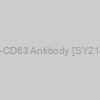 Anti-CD63 Antibody [SY21-02] |
|
ET1607-2 |
HUABIO |
100ul |
EUR 231 |
|
|
|
Description: The tetraspanins are integral membrane proteins expressed on cell surface and granular membranes of hematopoietic cells and are components of multi-molecular complexes with specific integrins. The tetraspanin CD63 (also known as LAMP-3, Melanoma-associated antigen ME491, TSPAN30, MLA1 and OMA81H) is a lysosomal membrane glycoprotein that translocates to the plasma membrane after platelet activation. CD63 is expressed on activated platelets, monocytes and macrophages, and is weakly expressed on granulocytes, T cell and B cells. It is located on the basophilic granule membranes and on the plasma membranes of lymphocytes and granulocytes. CD63 is a member of the TM4 superfamily of leukocyte glycoproteins that includes CD9, CD37 and CD53, which contain four transmembrane regions. CD63 may play a role in phagocytic and intracellular lysosome-phagosome fusion events. CD63 deficiency is associated with Hermansky-Pudlak syndrome. |
 Anti-Paxillin Antibody [SY23-02] |
|
ET1607-22 |
HUABIO |
100ul |
EUR 231 |
|
|
|
Description: Paxillin is a focal adhesion phosphoprotein that is localized to the cytoskeleton. Phosphorylation of paxillin has been shown to occur in response to PDGF treatment, v-Src transformation or cross-linking of integrins. FAK (focal adhesion kinase) and PYK2 have been shown to phosphorylate paxillin. FAK phosphorylates paxillin specifically on Tyr 118 in vitro. However, FAK phosphorylation does not seem to be required for the recruitment of paxillin to cell adhesion sites. Paxillin may play a role in signal transduction, regulation of cell morphology and the recruitment of structural and signaling molecules to focal adhesions. It has been shown that the amount of paxillin is reduced in mitotic cells by proteolytic downregulation and that paxillin is alternatively phosphorylated on serine rather than on tyrosine and serine during mitosis. |
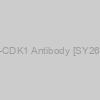 Anti-CDK1 Antibody [SY26-02] |
|
ET1607-51 |
HUABIO |
100ul |
EUR 231 |
|
|
|
Description: Cdk1 is a small protein (approximately 34 kilodaltons), and is highly conserved. Cdk1 is comprised mostly by the bare protein kinase motif, which other protein kinases share. Cdk1, like other kinases, contains a cleft in which ATP fits. When bound to its cyclin partners, Cdk1 phosphorylation leads to cell cycle progression. Given its essential role in cell cycle progression, Cdk1 is highly regulated. Most obviously, Cdk1 is regulated by its binding with its cyclin partners. Cyclin binding alters access to the active site of Cdk1, allowing for Cdk1 activity; furthermore, cyclins impart specificity to Cdk1 activity. At least some cyclins contain a hydrophobic patch which may directly interact with substrates, conferring target specificity. Furthermore, cyclins can target Cdk1 to particular subcellular locations. |
 Anti-HDAC2 Antibody [SY29-02] |
|
ET1607-78 |
HUABIO |
100ul |
EUR 231 |
|
|
|
Description: Histone deacetylase 2 (HDAC2) is an enzyme that in humans is encoded by the HDAC2 gene. It belongs to the histone deacetylase class of enzymes responsible for the removal of acetyl groups from lysine residues at the N-terminal region of the core histones (H2A, H2B, H3, and H4). As such, it plays an important role in gene expression by facilitating the formation of transcription repressor complexes and for this reason is often considered an important target for cancer therapy. Though the functional role of the class to which HDAC2 belongs has been carefully studied, the mechanism by which HDAC2 interacts with histone deacetylases of other classes has yet to be elucidated. HDAC2 is broadly regulated by protein kinase 2 (CK2) and protein phosphatase 1 (PP1), but biochemical analysis suggests its regulation is more complex (evinced by the coexistence of HDAC1 and HDAC2 in three distinct protein complexes). HDAC2 has been shown to play a role in cardiac hypertrophy, Alzheimer's disease, Parkinson's disease, acute myeloid leukemia (AML), osteosarcoma, and stomach cancer. |
 Anti-SOX18 Antibody [ST43-02] |
|
ET1609-11 |
HUABIO |
100ul |
EUR 231 |
|
|
|
Description: Sox genes comprise a family of genes that are related to the mammalian sex determining gene SRY. These genes similarly contain sequences that encode for the HMG-box domain, which is responsible for the sequence-specific DNA-binding activity. Sox genes encode putative transcriptional regulators implicated in the decision of cell fates during development and the control of diverse developmental processes. The highly complex group of Sox genes cluster at least 40 different loci that rapidly diverged in various animal lineages. At present, 30 Sox genes have been identified. Members of this family have been shown to be conserved during evolution and to play key roles during animal development. Some are involved in human diseases, including sex reversal. Sox-18 is a 384 amino acid nuclear protein that contains one HMG box DNA-binding domain and belongs to the Sox family of transcriptional regulators. |
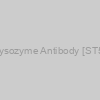 Anti-Lysozyme Antibody [ST50-02] |
|
ET1609-35 |
HUABIO |
100ul |
EUR 231 |
|
|
|
Description: The origins of the lysozyme proteins date back an estimated 400 to 600 million years. Generally, lysozyme genes are relatively small, roughly 10 kilobases in length, and composed of four exons and three introns. Originally a bacteriolytic defensive agent, the function of this family of proteins adapted to serve a digestive function in its present forms. Lysozymes in tissues and body fluids are associated with the monocyte-macrophage system and enhance the activity of immunoagents. Lysozyme C belongs to the glycosyl hydrolase 22 family, and newly identified relatives of Lysozyme C appear to possess anti-HIV activity, as well as preserved bacteriolytic function against Micrococcus lysodeikticus. Lysozyme C is capable of both hydrolysis and transglycosylation and also a slight esterase activity. It acts rapidly on both peptide-substituted and unsubstituted peptidoglycan, and slowly on chitin oligosaccharides. Lysozyme C defects are a cause of amyloidosis VIII, also called familial visceral or Ostertag-type amyloidosis. |
 Anti-Lysozyme Antibody [ST50-02] |
|
ET1609-35TR |
HUABIO |
20ul |
EUR 64.35 |
|
|
|
Description: The origins of the lysozyme proteins date back an estimated 400 to 600 million years. Generally, lysozyme genes are relatively small, roughly 10 kilobases in length, and composed of four exons and three introns. Originally a bacteriolytic defensive agent, the function of this family of proteins adapted to serve a digestive function in its present forms. Lysozymes in tissues and body fluids are associated with the monocyte-macrophage system and enhance the activity of immunoagents. Lysozyme C belongs to the glycosyl hydrolase 22 family, and newly identified relatives of Lysozyme C appear to possess anti-HIV activity, as well as preserved bacteriolytic function against Micrococcus lysodeikticus. Lysozyme C is capable of both hydrolysis and transglycosylation and also a slight esterase activity. It acts rapidly on both peptide-substituted and unsubstituted peptidoglycan, and slowly on chitin oligosaccharides. Lysozyme C defects are a cause of amyloidosis VIII, also called familial visceral or Ostertag-type amyloidosis. |
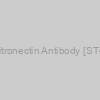 Anti-Vitronectin Antibody [ST49-02] |
|
ET1609-39 |
HUABIO |
100ul |
EUR 231 |
|
|
|
Description: Vitronectin is a cell adhesion and spreading factor found in serum and tissues. Vitronectin interact with glycosaminoglycans and proteoglycans. Is recognized by certain members of the integrin family and serves as a cell-to-substrate adhesion molecule. Inhibitor of the membrane-damaging effect of the terminal cytolytic complement pathway. The protein encoded by this gene is a member of the pexin family. It is found in serum and tissues and promotes cell adhesion and spreading, inhibits the membrane-damaging effect of the terminal cytolytic complement pathway, and binds to several serpin serine protease inhibitors. It is a secreted protein and exists in either a single chain form or a clipped, two chain form held together by a disulfide bond. |
 Anti-Vitronectin Antibody [ST49-02] |
|
ET1609-39TR |
HUABIO |
20ul |
EUR 64.35 |
|
|
|
Description: Vitronectin is a cell adhesion and spreading factor found in serum and tissues. Vitronectin interact with glycosaminoglycans and proteoglycans. Is recognized by certain members of the integrin family and serves as a cell-to-substrate adhesion molecule. Inhibitor of the membrane-damaging effect of the terminal cytolytic complement pathway. The protein encoded by this gene is a member of the pexin family. It is found in serum and tissues and promotes cell adhesion and spreading, inhibits the membrane-damaging effect of the terminal cytolytic complement pathway, and binds to several serpin serine protease inhibitors. It is a secreted protein and exists in either a single chain form or a clipped, two chain form held together by a disulfide bond. |
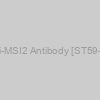 Anti-MSI2 Antibody [ST59-02] |
|
ET1609-79 |
HUABIO |
100ul |
EUR 231 |
|
|
|
Description: Msi2 (musashi homolog 2), also known as MSI2H, is a 328 amino acid protein that localizes to the cytoplasm and contains two RRM (RNA recognition motif) domains. Expressed ubiquitously at low levels, Msi2 functions as an RNA binding protein that, by regulating the expression of target mRNAs, is thought to play a role in the proliferation and maintenance of stem cells within the central nervous system. Msi2 is subject to post-translational phosphorylation and is upregulated in response to brain injury, suggesting a role in healing and brain tissue regeneration. Chromosomal aberrations involving the Msi2 gene are associated with the progression of chronic myeloid leukemia. Multiple isoforms of Msi2 exist due to alternative splicing events. |
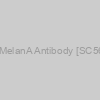 Anti-MelanA Antibody [SC56-02] |
|
ET1610-47 |
HUABIO |
100ul |
EUR 231 |
|
|
|
Description: Melanoma-associated antigens recognized by cytotoxic T lymphocytes (CTL) have been grouped into three categories: melanocyte differentiation antigens, cancer/testis-specific antigens and mutated or aberrantly expressed antigens. Many of these antigens consist of peptides that are presented to T cells by HLA molecules; they represent potential targets for cancer immunotherapy. Melan-A (also designated MART-1) is a melanocyte differentiation antigen that is specific to melanomas, melanocyte cell lines and retina. Melan-A peptide is recognized by most HLA-A2-restricted tumor-specific tumor-infiltrating lymphocytes in patients with melanoma. Antimelanoma cytotoxic T lymphocytes can be generated with a Melan-A peptide, implicating Melan-A as a potential candidate for antigen-specific immunotherapy in melanoma patients. |
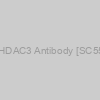 Anti-HDAC3 Antibody [SC55-02] |
|
ET1610-5 |
HUABIO |
100ul |
EUR 231 |
|
|
|
Description: In the intact cell, DNA closely associates with histones and other nuclear proteins to form chromatin. The remodeling of chromatin is believed to be a critical component of transcriptional regulation and a major source of this remodeling is brought about by the acetylation of nucleosomal histones. Acetylation of lysine residues in the amino-terminal tail domain of histone results in an allosteric change in the nucleosomal conformation and an increased accessibility to transcription factors by DNA. Conversely, the deacetylation of histones is associated with transcriptional silencing. Several mammalian proteins have been identified as nuclear histone acetylases, including GCN5, PCAF (p300/CBP-associated factor), p300/CBP and the TFIID subunit TAF II p250. Mammalian HDAC1 (also designated HD1), HDAC2 (also designated RPD3) and HDAC3, all of which are related to the yeast transcriptional factor Rpd3p, have been identified as histone deacetylases. |
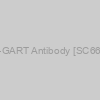 Anti-GART Antibody [SC66-02] |
|
ET1610-68 |
HUABIO |
100ul |
EUR 231 |
|
|
|
Description: Purines are critical for energy metabolism, cell signaling and cell reproduction and also function as precursors for coenzymes, energy transfer molecules, regulatory factors and proteins involved in RNA and DNA synthesis. GART (GAR transformylase), also referred to as AIRS, GARS, PAIS, PGFT, PRGS or GARTF, is 1,010 amino acids in length and is a key folate-dependent trifunctional enzyme with phosphoribosylglycinamide formyltransferase, phosphoribosylglycinamide synthetase and AICAR (phosphoribosylaminoimidazole synthetase) activity required for de novo purine biosynthesis. Cancer cells require considerable amounts of purines to sustain their accelerated growth and GART is, therefore, a target for cancer chemotherapy. GART is highly conserved in vertebrates. Two isoforms of GART are expressed due to alternative splicing events. |
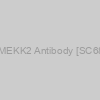 Anti-MEKK2 Antibody [SC68-02] |
|
ET1610-70 |
HUABIO |
100ul |
EUR 231 |
|
|
|
Description: Mitogen-activated protein (MAP) kinase cascades are activated by various extracellular stimuli including growth factors. The MEK kinases (also designated MAP kinase kinase kinases, MKKKs, MAP3Ks or MEKKs) phosphorylate and thereby activate the MEKs (also called MAP kinase kinases or MKKs), including ERK, JNK and p38. These activated MEKs in turn phosphorylate and activate the MAP kinases. The MEK kinases include Raf-1, Raf-B, Mos, MEK kinase-1, MEK kinase-2, MEK kinase-3, MEK kinase-4, ASK 1 (MEK kinase-5) and MAP3K6 (MEK kinase-6). MEK kinase-1 has been shown to phosphorylate MEK-1 via a Raf-independent pathway. Evidence suggests that MEK-3 is preferentially activated by MEK kinase-3 and that MEK-4 is activated by both MEK kinase-2 and MEK kinase-3. MEK kinase-4 has been shown to specifically activate the JNK pathway. ASK 1 activates both MEK-4 and MEK-3/MEK-6 pathways. |
 Anti-CD14 Antibody [SC69-02] |
|
ET1610-85 |
HUABIO |
100ul |
EUR 231 |
|
|
|
Description: Lipopolysaccharide (LPS) elicits the secretion of mediators and cytokines produced by activated macrophages and monocytes. CD14 is a glycosylphosphatidylinositol (GPI)-anchored protein found on the surfaces of monocytes and polymorphonuclear leukocytes. CD14 functions as a receptor for LPS, resulting in the secretion of various proteins. An important component in the LPS activation of monocytes through the CD14 receptor is the "adapter molecule," lipopolysaccharide binding protein (LBP). There are two forms of CD14, a membrane-associated form (mCD14), and a soluble form (sCD14). mCD14 responds to LPS alone and facilitates the secretion of proteins, while cells not expressing mCD14 fail to respond to LPS. The cells that lack mCD14 respond to LPS/LBP in the presence of sCD14. |
 Anti-SHP2 Antibody [SN72-02] |
|
ET1611-35 |
HUABIO |
100ul |
EUR 231 |
|
|
|
Description: Acts downstream of various receptor and cytoplasmic protein tyrosine kinases to participate in the signal transduction from the cell surface to the nucleus .Positively regulates MAPK signal transduction pathway.Dephosphorylates GAB1, ARHGAP35 and EGFR.Dephosphorylates ROCK2 at 'Tyr-722' resulting in stimulation of its RhoA binding activity.Dephosphorylates CDC73.Dephosphorylates SOX9 on tyrosine residues, leading to inactivate SOX9 and promote ossification. |
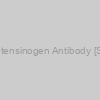 Anti-Angiotensinogen Antibody [SD201-02] |
|
ET1612-48 |
HUABIO |
100ul |
EUR 231 |
|
|
|
Description: Angiotensin is formed from a precursor, angiotensinogen, which is produced by the liver and found in the a-globulin fraction of plasma. The lowering of blood pressure is a stimulus to secretion of Renin by the kidney into the blood. Renin cleaves from angiotensinogen a terminal decapeptide, Angiotensin I (Ang I). This is further altered by the enzymatic removal of a dipeptide to form Angiotensin II (Ang II). Screening a panel of human-mouse somatic cell hybrids confirmed the assignment of the AGT locus to human chromosome 1. Angiotensin, an octapeptide hormone, is an important physiological effector of blood pressure and volume regulation through vasoconstriction, aldosterone release, sodium uptake and thirst stimulation. It has been shown that mechanical stress causes release of Angiotensin from cardiac myocytes and that Angiotensin acts as an initial mediator of the hypertrophic response. Angiotensin treatment also stimulates phosphorylation of Shc, FAK and MAP kinases and induces MKP-1, indicating stimulation of growth factor pathways. Angiotensin stimulation through AT1 has been shown to activate the JAK/Stat pathway involving a direct interaction between JAK2 and AT1 as demonstrated by co-immunoprecipitation. |
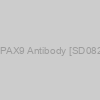 Anti-PAX9 Antibody [SD082-02] |
|
ET1612-59 |
HUABIO |
100ul |
EUR 231 |
|
|
|
Description: Pax genes contain paired domains with strong homology to genes in Droso-phila which are involved in programming early development. Pax-9, a member of the paired box-containing gene family, is closely related in its paired do-main to Pax-1. The Pax-9 gene encodes the highly conserved paired domain and the gene is a member of the same subgroup as Pax-1/undulated. Pax-9 is essential for the development of a variety of organs and skeletal elements. Mutations in either the Pax-1 or the Pax-9 genes may produce an inherited skeletal disorder such as the Jarcho-Levin syndrome or other forms of spondylocostal dysplasia, conditions resembling “undulated” in the mouse. A frameshift mutation within the paired domain of Pax-9 was identified in a family segregating autosomal dominant oligodontia whose members had normal primary dentition but lacked most permanent molars. In addition to lack of permanent molars, some individuals also lacked maxillary and/or mandibular second premolars, as well as mandibular central incisors. The gene which encodes Pax-9 maps to human chromosome 14q12-q13. |
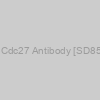 Anti-Cdc27 Antibody [SD85-02] |
|
ET1612-94 |
HUABIO |
100ul |
EUR 231 |
|
|
|
Description: Cell division cycle protein 27 homolog is a protein that in humans is encoded by the CDC27 gene. The protein encoded by this gene shares strong similarity with Saccharomyces cerevisiae protein Cdc27, and the gene product of Schizosaccharomyces pombe nuc 2. This protein is a component of anaphase-promoting complex (APC), which is composed of eight protein subunits and highly conserved in eucaryotic cells. APC catalyzes the formation of cyclin B-ubiquitin conjugate that is responsible for the ubiquitin-mediated proteolysis of B-type cyclins. This protein and 3 other members of the APC complex contain the TPR (tetratricopeptide repeat), a protein domain important for protein-protein interaction. Cdc34, Cdc27 and Cdc16 function as ubiquitin-conjugating enzymes. Cdc16 and Cdc27 are components of the APC (anaphase-promoting complex) which ubiquitinates cyclin B, resulting in cyclin B/Cdk complex degradation. |
 Anti-SOD2 Antibody [JJ089-02] |
|
ET1701-54 |
HUABIO |
100ul |
EUR 231 |
|
|
|
Description: The superoxide dismutase family is composed of three metalloenzymes (SOD-1, SOD-2 and SOD-3) that catalyze the oxido-reduction of reactive oxygen species (ROS) such as superoxide anion. The SOD-2 precursor is a 222 amino acid protein that is encoded by nuclear chromatin, synthesized in the cytosol and imported posttranslationally into the mitochondrial matrix. Unlike SOD-1, which is a homodimeric cytosolic Cu-Zn enzyme, SOD-2 is a homotetrameric manganese enzyme (also known as MnSOD) that functions in the mitochondrion. ROS are implicated in a wide range of degenerative processes, including Alzheimer’s disease, Parkinson’s disease and ischemic heart disease. Homozygous mutant mice, which lack SOD-2, exhibit dilated cardiomyopathy, accumulation of lipid in liver and skeletal muscle, metabolic acidosis, oxidative DNA damage and respiratory chain deficiencies in heart and skeletal muscle. Polymorphisms in the SOD-2 gene have also been implicated in nonfamilial, idiopathic, dilated cardiomyopathy in humans. |
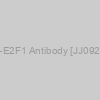 Anti-E2F1 Antibody [JJ092-02] |
|
ET1701-73 |
HUABIO |
100ul |
EUR 231 |
|
|
|
Description: The human retinoblastoma gene product appears to play an important role in the negative regulation of cell proliferation. Functional inactivation of Rb can be mediated either through mutation or as a consequence of interaction with DNA tumor virus-encoded proteins. Of all the Rb associations described to date, the identification of a complex between Rb and the transcription factor E2F most directly implicates Rb in regulation of cell proliferation. E2F was originally identified through its role in transcriptional activation of the adenovirus E2 promoter. Sequences homologous to the E2F binding site have been found upstream of a number of genes that encode proteins with putative functions in the G1 and S phases of the cell cycle. E2F-1 is a member of a broader family of transcription regulators including E2F-2, E2F-3, E2F-4, E2F-5, E2F-6 and E2F-7 each of which forms heterodimers with a second protein, DP-1, forming an "active" E2F transcriptional regulatory complex. |
 Anti-FOXA1 Antibody [JF10-02] |
|
ET1702-89 |
HUABIO |
100ul |
EUR 231 |
|
|
|
Description: Forkhead box protein A1 (FOXA1), also known as hepatocyte nuclear factor 3-alpha (HNF-3A), is a protein that in humans is encoded by the FOXA1 gene. FOXA1 is a member of the forkhead class of DNA-binding proteins. These hepatocyte nuclear factors are transcriptional activators for liver-specific transcripts such as albumin and transthyretin, and they also interact with chromatin as a pioneer factor. Similar family members in mice have roles in the regulation of metabolism and in the differentiation of the pancreas and liver. Mutations in this gene have been recurrently seen in instances of prostate cancer. Expression of FOXA1 correlates with two EMT markers, namely Twist1 and E-cadherin in breast cancer. |
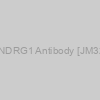 Anti-NDRG1 Antibody [JM32-02] |
|
ET1705-20 |
HUABIO |
100ul |
EUR 231 |
|
|
|
Description: Protein NDRG1 is a protein that in humans is encoded by the NDRG1 gene. This gene is a member of the N-myc downregulated gene family which belongs to the alpha/beta hydrolase superfamily. The protein encoded by this gene is a cytoplasmic protein involved in stress responses, hormone responses, cell growth, and differentiation[citation needed]. Mutations in this gene have been reported to be causative the autosomal-recessive version of Charcot-Marie-Tooth disease known as CMT4D. It has been reported that NDRG1 localizes to the endosomes and is a Rab4a effector involved in vesicular recycling. As reviewed by Fang et al., NDRG1 is involved in embryogenesis and development, cell growth and differentiation, lipid biosynthesis and myelination, stress responses, immunity, DNA repair and cell adhesion among other functions. NDRG1 is localised in the cytoplasm, nucleus and mitochondrion, at probabilities of 47.8%, 26.1% and 8.7%, respectively. In response to DNA damage NDRG1 translocates from the cytoplasm to the nucleus, where it may inhibit cell growth and promote DNA repair mechanisms. It is suggested that NDRG1 acts as a stress response gene or potentially as a transcription factor. |
 Anti-USP39 Antibody [JE61-02] |
|
HA720071 |
HUABIO |
100ul |
EUR 231 |
|
|
|
Description: Plays a role in pre-mRNA splicing as a component of the U4/U6-U5 tri-snRNP, one of the building blocks of the precatalytic spliceosome. Regulates AURKB mRNA levels, and thereby plays a role in cytokinesis and in the spindle checkpoint. Does not have ubiquitin-specific peptidase activity. The U4/U6-U5 tri-snRNP complex is a building block of the precatalytic spliceosome (spliceosome B complex). Component of the U4/U6-U5 tri-snRNP complex composed of the U4, U6 and U5 snRNAs and at least PRPF3, PRPF4, PRPF6, PRPF8, PRPF31, SNRNP200, TXNL4A, SNRNP40, SNRPB, SNRPD1, SNRPD2, SNRPD3, SNRPE, SNRPF, SNRPG, DDX23, CD2BP2, PPIH, SNU13, EFTUD2, SART1 and USP39, plus LSM2, LSM3, LSM4, LSM5, LSM6, LSM7 and LSM8. |
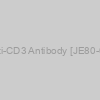 Anti-CD3 Antibody [JE80-02] |
|
HA720082 |
HUABIO |
100ul |
EUR 231 |
|
|
|
Description: The CD3 protein is a T-cell marker, a complex of four structurally distinct membrane glycoprotein isoforms, 20-50 kDa, comprising extracellular, transmembrane and intracellular domains. The CD3 complex is responsible for mediating signal transduction to the internal environment upon antigenic recognition by TCR, causing T-cell proliferation and release of cytokines. Except for a weak expression in Purkinje cells (with some of the Abs) and activated NK-cells, CD3 is found only in T-cells. CD3 appear in the cytoplasm of prothymocytes, and on the surface of about 95% of thymocytes, while cytoplasmic CD3 is lost as the cells differentiate into medullary thymocytes. In therapy resistant celiac disease, a shift from membranous to cytoplasmic CD3 expression is seen (together with loss of CD8). In malignant lymphomas, CD3 is a pan-T-cell lineage-restricted antigen, detected in 80-97% of the T-cell lymphomas. Mature T-cell lymphomas including cases of mycosis fungoides, peripheral T-cell lymphoma and anaplastic large cell lymphoma may aberrantly lose CD3. NK-cell lymphomas can show a cytoplasmic reaction. Reed-Sternberg cells may show a globular paranuclear reaction. CD3 is an important marker in the classification of malignant lymphomas and lymphoid leukaemias. Also the marker is useful for the identification of T-cells in, e.g., celiac disease, lymphocytic colitis and colorectal carcinomas associated with loss of a mismatch repair protein. |
 Anti-NTH1 Antibody [JE65-02] |
|
HA721108 |
HUABIO |
100ul |
EUR 231 |
|
|
|
Description: Endonuclease III-like protein 1 is an enzyme that in humans is encoded by the NTHL1 gene. As reviewed by Li et al. NTHL1 is a bifunctional DNA glycosylase that has an associated beta-elimination activity. NTHL1 is usually involved in removing oxidative pyrimidine lesions through base excision repair. NTHL1 catalyses the first step in base excision repair. It cleaves the N-glycosylic bond between the damaged base and its associated sugar residue and then cleaves the phosphodiester bond 3' to the AP site, leaving a 3'-unsaturated aldehyde after beta-elimination and a 5'-phosphate at the termini of the repair gap. Low expression of NTHL1 is associated with initiation and development of astrocytoma. Low expression of NTHL1 is also found in follicular thyroid tumors. A germ line homozygous mutation in NTHL1 causes a cancer susceptibility syndrome similar to Lynch syndrome. |
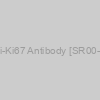 Anti-Ki67 Antibody [SR00-02] |
|
HA721115 |
HUABIO |
100ul |
EUR 231 |
|
|
|
Description: The Ki-67 protein is a nuclear protein doublet, 345-395 kDa, playing a pivotal role in maintaining cell proliferation. Ki-67 is present in all non-G0 phases of the cell cycle. Beginning in the mid G1, the level increases through S and G2 to reach a peak in M. In the end of M, is is rapidly catabolized. The Ki-67 labelling index (LI), i.e., the percentage of cells in a tissue staining for Ki-67, indicates the growth fraction. For many tumours, the rate of cell proliferation as assessed by Ki-67 immunoreactivity correlates with tumour grade and clinical course. In Non-Hodgkin lymphoma a labelling index of less than 20% is seen in low grade lymphomas, greater than 20% is associated with high grade lymphomas. Low grade lymphomas with a labelling index in excess of 5% have a worse prognosis than those with an index of less than 5%. In Burkitt and Burkitt-like lymphoma, nearly 100% of the nuclei are stained. This can be used as a diagnostic criterion. In gliomas the indices ranges from 0% to 5% for low grade astrocytomas while anaplastic astrocytomas and glioblastomas most frequently show an index above 10%. In soft tissue sarcomas Ki-67 index is positively correlated with mitotic count, cellularity and histological grade. In some benign tumours, like meningioma, a high LI is associated with a high recurrence rate. In dysplasia in Barrett's oesophagus and in granulosa cell tumours and ovarian serous tumours, Ki-67 LI is associated with progression. In the former, reproducibility of dysplasia grading is improved when Ki67 is included. In breast cancer, the proliferative index measured by Ki67 immunoreactivity has both prognostic and predictive value. |
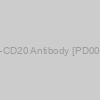 Anti-CD20 Antibody [PD00-02] |
|
HA721138 |
HUABIO |
100ul |
EUR 231 |
|
|
|
Description: The CD20 antigen is a membrane-embedded, non-glycosylated phosphoprotein, 33-37 kDa. CD20 functions as a Ca2+-permeable cation channel, involved in the regulation of B-cell activation, proliferation and differentiation. CD20 appears on the surface of the pre-B lymphocyte between the time of light chain rearrangement and expression of intact surface immunoglobulin and is lost just before terminal B-cell differentiation into plasma cells. CD20 is virtually specific for normal B-cells. A weak expression has been demonstrated in a subpopulation of T-cells, but not in any other cell type. CD20 is expressed in the large majority of cases of B-cell leukaemia/lymphoma. Early stage precursor B lymphoblastic leukaemia/lymphoma may be negative, and chronic lymphocytic leukaemia/small cell lymphoma may show a weak staining. Plasma cell neoplasms are as a rule CD20 negative. T-cell lymphomas are almost always negative, but CD20 has been demonstrated in few cases of various types of T-cell lymphoma. In Hodgkin lymphoma, the nodular lymphocyte-predominant subtype shows CD20 staining of L&H cells in most cases, while Reed-Sternberg cells in the other subtypes reveal CD20 positivity in about 40, albeit in a minority of neoplastic cells. Acute myeloid leukaemia is CD20 positive in few cases, while blastic transformation in chronic myeloid leukaemia is accompanied by CD20 positivity in about 30%. Thymoma may reveal CD20 positivity in a spindle cell component. In patients treated with retuximab (a humanized anti-CD20 antibody) for malignant B-cell lymphoma, the CD20 epitopes disappear (both in normal and neoplastic B-cells) as a result of down-modulation of CD20 m-RNA in the cells. This process is potentially reversible. Together with CD79a, CD20 is one of the most important markers for the identification of B-cell neoplasms as outlined above. Tonsil and appendix are appropriate controls: The mantle zone B-cells and the germinal centre B-cells must show a very strong staining reaction. No other cells should stain. |
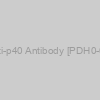 Anti-p40 Antibody [PDH0-02] |
|
HA721222 |
HUABIO |
100ul |
EUR 231 |
|
|
|
Description: p63 protein (p63) is a nuclear protein, a transcription factor. The p40 is an isoform of p63, a transcription factor that regulates many cell activities, including cell proliferation, maintenance, and differentiation. It performs as a sensitive and specific tool for aiding in the identification of squamous cell carcinoma of the lung. In addition to its utility as a squamous differentiation marker, p40 has also been proven to be a valuable marker for highlighting myoepithelial and basal cell populations in prostate, breast, skin, and salivary gland. Strong p40 expression is frequently observed in esophageal cancerous squamous lesions. Immunohistochemical detection of p40 can also be helpful in identifying urothelial carcinoma. In cases of prostate carcinoma, p40 is almost always found to be negative for basal cell staining. Among carcinomas, p40 has approximately the same sensitivity as p63 but a higher specificity, as the TAp63 isoform is expressed more widespread in eg., adenocarcinomas. Moreover, p63 occur in lymphomas that are p40 negative. Placenta is recommended as positive tissue control for p40, where an at least weak to moderate, distinct nuclear staining reaction of cytotrophoblasts must be seen. The cytotrophoblasts should be visible even at low magnification (5x objective). Supportive to placenta, tonsil can be used as positive and negative tissue control. Virtually all squamous epithelial cells must show a moderate to strong, distinct nuclear staining reaction. No nuclear or cytoplasmic staining reaction should be seen in other cell types. |
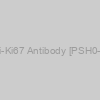 Anti-Ki67 Antibody [PSH0-02] |
|
HA721254 |
HUABIO |
100ul |
EUR 231 |
|
|
|
Description: Antigen KI-67, also known as Ki-67, Ki-67 or MKI67 (Marker Of Proliferation Ki-67), is a protein that in humans is encoded by the MKI67 gene (antigen identified by monoclonal antibody Ki-67). Antigen KI-67 is a nuclear protein that is associated with cellular proliferation. Altering Ki-67 expression levels did not significantly affect cell proliferation in vivo. Ki-67 mutant mice developed normally and cells lacking Ki-67 proliferated efficiently. Furthermore, it is associated with ribosomal RNA transcription. Inactivation of antigen KI-67 leads to inhibition of ribosomal RNA synthesis. The Ki-67 protein (also known as MKI67) is a cellular marker for proliferation, and can be used in immunohistochemistry. It is strictly associated with cell proliferation. During interphase, the Ki-67 antigen can be exclusively detected within the cell nucleus, whereas in mitosis most of the protein is relocated to the surface of the chromosomes. Ki-67 protein is present during all active phases of the cell cycle (G1, S, G2, and mitosis), but is absent in resting (quiescent) cells (G0). Cellular content of Ki-67 protein markedly increases during cell progression through S phase of the cell cycle. In breast cancer Ki67 identifies a high proliferative subset of patients with ER-positive breast cancer who derive greater benefit from adjuvant chemotherapy. Ki-67 is an excellent marker to determine the growth fraction of a given cell population. The fraction of Ki-67-positive tumor cells (the Ki-67 labeling index) is often correlated with the clinical course of cancer. The best-studied examples in this context are prostate, brain and breast carcinomas, as well as nephroblastoma and neuroendocrine tumors. For these types of tumors, the prognostic value for survival and tumor recurrence have repeatedly been proven in uni- and multivariate analysis. |
 Anti-Fragilis Antibody [JU73-02] |
|
ET1706-09 |
HUABIO |
100ul |
EUR 231 |
|
|
|
Description: Interferon-induced transmembrane protein 3 (IFITM3) is a protein that in humans is encoded by the IFITM3 gene. It plays a critical role in the immune system's defense against Swine Flu, where heightened levels of IFITM3 keep viral levels low, and the removal of IFITM3 allows the virus to multiply unchecked. This observation has been further advanced by a recent study from Paul Kellam's lab that shows that a single nucleotide polymorphism in the human IFITM3 gene purported to increase influenza susceptibility is overrepresented in people hospitalised with pandemic H1N1. The prevalence of this mutation is thought to be approximately 1/400 in European populations. |
 Anti-XPD Antibody [JE55-02] |
|
ET7110-93 |
HUABIO |
100ul |
EUR 231 |
|
|
|
Description: ATP-dependent 5'-3' DNA helicase, component of the general transcription and DNA repair factor IIH (TFIIH) core complex, which is involved in general and transcription-coupled nucleotide excision repair (NER) of damaged DNA and, when complexed to CAK, in RNA transcription by RNA polymerase II. In NER, TFIIH acts by opening DNA around the lesion to allow the excision of the damaged oligonucleotide and its replacement by a new DNA fragment. The ATP-dependent helicase activity of XPD/ERCC2 is required for DNA opening. In transcription, TFIIH has an essential role in transcription initiation. When the pre-initiation complex (PIC) has been established, TFIIH is required for promoter opening and promoter escape. Phosphorylation of the C-terminal tail (CTD) of the largest subunit of RNA polymerase II by the kinase module CAK controls the initiation of transcription. XPD/ERCC2 acts by forming a bridge between CAK and the core-TFIIH complex. Involved in the regulation of vitamin-D receptor activity. As part of the mitotic spindle-associated MMXD complex it plays a role in chromosome segregation. Might have a role in aging process and could play a causative role in the generation of skin cancers. |
castaneum develops resistance rapidly to many classes of insecticides including organophosphates, methyl carbamates, pyrethroids, neonicotinoids and insect growth regulators such as chitin synthesis inhibitors, it is further a suitable test system for studying resistance mechanisms. In this review, we will summarize recent advances in research focusing on the mode of action of insecticides and mechanisms of resistance identified using T. castaneum as a pest model.
